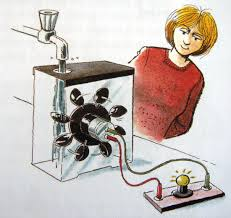So here I am again, it is almost exactly a year since my last Fracking blog entitled “What the Frack”. Although I left the blog wide open for a follow up, I was secretly hoping we would never get there….. and I never imagined it would be involving a town I spent so much of my teenage years in.
For those of you who are not familiar as to what exactly fracking is, I urge you to take a look at my last blog and get all the facts so you can make an informed decision as to which side of the fence you sit.
To give you a brief catch up on where the process is so far, I thought it would only be fair to start with a background on the “who & where”, as this is what will be affected first and fore most.
Matatiele / Matat is located in the Eastern Cape, though it didn’t start there….No it didn’t move! Lol! However In 2005, the municipality was moved from the KwaZulu-Natal province to the Eastern Cape.
Matat is located at the foothills of the magnificent Drakensberg and borders Lesotho.
Now, the proposed area for this Fracking is not some arid land in the middle of nowhere. It is a community, a community who is facing the terrifying prospect of being fracked in the future.
And while the affected area itself seems small to outside folk, it is not! It is host to towns folk, farming folk and a large rural community. It is large in heritage, culture and beauty. It’s primary economic activity is derived from cattle farming, but has a healthy agricultural industry too. This area stands to lose a lot as it is now under threat by an international company proposing exploration with the possibility of having hydraulic fracturing ripping through 120 000 ha of land including a total of 240 farms!
However people are not sitting back. It has been amazing to do the research for this blog, finding such a large outcry from an array of environmental groups and community members. I came across this response to the bid and I found it to be powerful and inspiring and absolutely made me want to be part of the solution. Take a look. Their concerns are for good reason – some of the very worrying factors surrounding their concerns is the impact on the land and its water. A lot of people don’t know this, but Matat suffers from stressed water supply in the winter months and their water supplies over 1 million downstream users. So the concern of contamination or depletion is a very real one.
There are health concerns too, both for human and herds alike, so while fracking may mean money for our economy at large, what does it mean for our local farmers and their families and the farm worker’s family? The farms themselves will undergo changes resulting in loss, if exploration to this land goes forward, there will be 10 core boreholes drilled, the land will then be home to water borehole rigs, water tanks, pumps, trailers, farm trucks, compressors, caravans etc.all brought on by new access roads tearing through the land, each operation area will be +-1000m2.
And…. here is the kicker! Very little local jobs!!! Yes the bulk of the work force will be contracted out! So who is really benefiting here?
Now in no way have I covered the severity of the situation, but I thought before I get ahead of myself I should go through the process and what we know for sure thus far, so here are some points to date.
- The Parent company looking to explore the possibility of fracking in the Eastern Cape is Rhino Resources, their local subsidiary is called Rhino Oil and Gas Exploration South Africa (Pty) Ltd.
- Rhino Oil and Gas Exploration South Africa (Pty) Ltd have logged an application for exploration rights with Petroleum Agency South Africa.
- The Proposed exploration time is for a total of 3 years.
- PASA has to approve the application before any exploration can take place in terms of the Environmental Management act, 107 of 1998.
- SLR Consulting (Africa) (Pty) Ltd (SLR) has been appointed by Rhino Oil and Gas Exploration South Africa (Pty) Ltd to undertake the environmental assessment process.
- A draft scoping report made available to IAP (Interested and affected parties)
- Interested and affected parties had until the 10 October 2015 to submit their concerns.
So What’s Next?
- From January to June 2016 the EIA and EMP (Environmental Management Programme) will take place and once again be made available to the IAPs.
- Public meetings will be held and then all the reports and concerns will be sent on to the decision makers, PASA.
I have attached the initial report SLR Consulting has done and what I found interesting and hopeful was what they said in their motivation for the exploration project, and I quote:
“Petroleum products remain a vital source of energy. Natural gas comprises mostly methane and is a relatively clean, environmentally friendly form of energy. It can be used to generate electricity or provide heat for domestic and industrial purposes. Once extracted, gas can be easily contained, transported and safely used in many applications. The type of downstream use is entirely dependent on the commercial scale of the resource.”
Now I’m not sure if I’m reading too much into this but their motivation was 4 and a bit lines long, where the list of Potential Environmental Impacts spreads down the whole page, with concerns arranging from, Farm Safety, Farm Infrastructure, Biodiversity, Surface and Ground Water, Air, Noise and that is just to mention a few. Please go take a look at the full report.
I know for sure which side of the fence I sit on and it’s the side where we look after the beautiful country we have, and yes, I know our Country is in economic trouble, but after all is said and done…. we can’t drink money!
Now while my blog has been centered around the possible fracking in Matatiele, don’t for one minute think you are safe.
It will seem that KZN Midlands has been deemed a very desirable fracking ground!
The fracking belt in KZN:
- Lies against the Drakensberg (among other areas) – the birthplace of our rivers
- Crosses three major rivers – the Tugela, the uMngeni and the uMkomaas. The Greater uMngeni River Catchment is of strategic significance to South Africa as it supports the third largest economic hub in the country, namely the City of Durban, through the supply of water necessary to deliver water and sanitation services for social and economic needs.
- Below are two maps which reflect a little more detail in terms of the Rhino Gas Exploration area affected HDLA (HowickLand Owners Association) & NRLA (Nottingham Road Land Owners Association) areas. Whilst not reflected on the map, the Hilton College area, Umgeni Valley, Karkloof, Mt Gilboa, Rietvlei and Mt West areas will also be included.
The USA has already started cancelling fracking projects as water supplies in the areas dwindle! Can KZN really afford to spare the water we have? I say this as we go through one of our driest spells, as we speak, restrictions already imposed in some areas!
As we speak, currently, 19 percent of the rural population lacks access to a reliable water supply and 33 percent do not have basic sanitation services. While rural citizens suffer the most, over 26 percent of all schools (urban or rural), and 45 percent of clinics, have no water access either.
Just a thought….Should getting fresh drinking water to every person in our country not be government priority before we start exploiting the water we have?
Risks and Concerns of Fracking
Contamination of groundwater
Methane pollution and its impact on climate change
Air pollution impacts
Exposure to toxic chemicals
Blow-outs due to gas explosion
Waste disposal
Large volume water use in water-deficient regions
Fracking-induced earthquakes
Workplace safety
Infrastructure degradation
More needs to be done, our Government needs to know that it is no longer OK for them to leave our Country vulnerable to International land Vultures!
We need to feel protected, we will not sit by and not be heard!
So If you to feel the same, then head over and sign the PETITION and show your support, not only to a small community you may have never heard of but to our Country in general.
Say No to Fracking;)!!!
I hope you have enjoyed my blog today, but more importantly I hope I have inspired some of you to do something about the impending problem we face with these proposals to frack our beautiful country.
And while you are signing the petition, please can you take a look at these worthy causes and show them your support too as they stand up against fracking in our country.
https://www.facebook.com/happyearthforum?ref=nf
http://www.wessa.org.za/what-we-do/environmental-governance.htm
https://mpophomeniconservationgroup.wordpress.com/mnandi/
http://enviros.co.za/
https://midlandsconservanciesforum.wordpress.com/tag/fracking/
https://www.facebook.com/CentreEnvironmentalRights
http://www.midlandsconservancies.org.za/prpagefracking.php
Sources:
http://www.iol.co.za/business/news/new-oil-exploration-bid-sparks-fear-1.1920822#.ViT0MCsYHtJ
http://12.000.scripts.mit.edu/mission2017/case-studies/water-access-in-south-africa/
About Sherina Shawe
I am a strong believer in "What you put in , is what you will get out" and this drives me every day, whether it's at home with my gorgeous family or at work where I get to fuel my competitive spirit. I love who I am and who I'm becoming. I love where I am , but more importantly where I'm going.... #EternalOptimist #Aspire2Inspire















